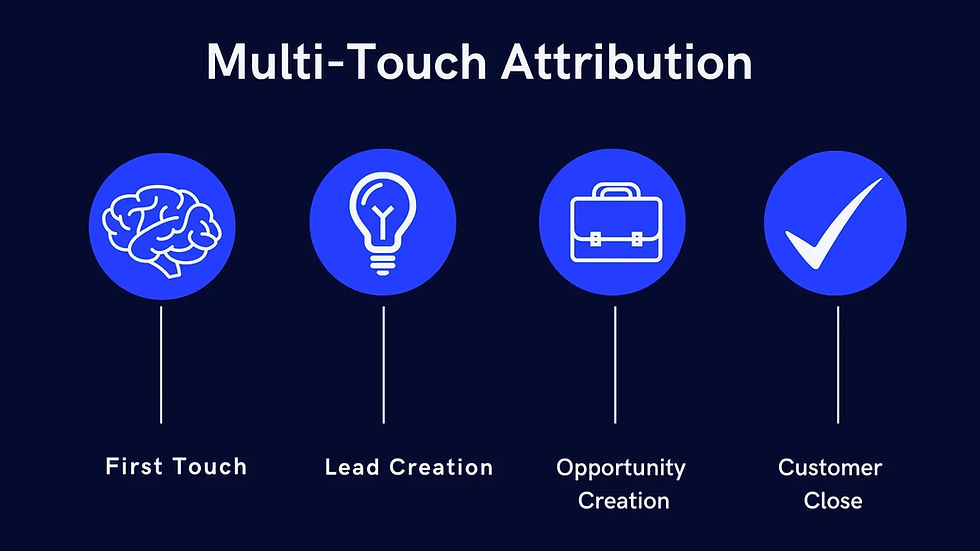What is multi-touchpoint attribution, and how can it be used in marketing?
- virtueanalytics9
- Dec 5, 2022
- 2 min read
Multi-touchpoint attribution (MTA) is a technique used in marketing to identify and attribute success with a product or service. Multi-touchpoint attribution enables businesses to understand how different touch points - from customers' initial interactions through to follow-up interactions - impact customer engagement and overall customer satisfaction. By understanding where customer spends their time, businesses can better cater their services to meet their needs and expectations.

Attribution theory: What are the different attribution models, and why do they matter?
Multi-touch attribution models weigh the various touchpoints in a customer's journey and can be used to help you understand how your brand appeals to them. The most important touchpoints can be identified using a variety of different models; here are four of the best-known multi-touch attribution models listed below to get you started:
Linear Attribution Model: Linear attribution is an even-weighting attribution model that credits all touchpoints in the buyer's journey equally for a conversion. This is the gold standard when it comes to multi-touch attribution models. It's ideal if you want to know how your touchpoints interact to influence a deal. Or if you don't have a baseline understanding of how your touch points perform among your target audience.
Time Decay Attribution: When measuring the success of short-term touchpoints like campaigns, time decay attribution is ideal. A time-decay attribution model organizes your touchpoints based on their per cent influence on a comparison. The least-influential touchpoint (with the lowest percentage coming first) is often the most influential.
U-Shaped Attribution: A U-shaped attribution model, also known as a bathtub model, assigns a higher percentage of credit to the first and last touchpoints in the buyer's journey. If your team wants to focus on the impact of your multiple touchpoints, this model is ideal. There is less emphasis on touchpoints that support the user's middle stages.
W-Shaped Attribution: The W-shaped multi-touch attribution gives credit to the first and last touchpoints in the buyer's journey, as well as value to touchpoints that are in the middle of the journey. This is useful if you want to understand which touchpoints convert leads and which ones encourage customers to engage and progress through the customer journey.
Conclusion: How can you use multi-touch points to help your business?
In conclusion, there are a number of factors to consider when determining the best multi-touch attribution solution for your business. These include your goals, business needs, and how you intend to use the output to improve the effectiveness of your marketing.
Virtue’s Marketing analytics solutions assist our marketing customers in capturing and integrating all available internal and external data to create a single source of truth, resulting in powerful competitive advantages.



Comments